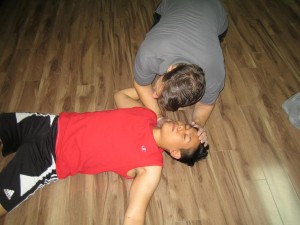Overview
When a person receives an injury to the head, this can cause brain damage, skull damage, as well as damage to their scalp. Inside the skull, protected by meninges, which is soft tissue, rests the brain. Thus, any head injury is cause for concern.
Skull Fractures
In most cases, a head injury occurs when there is direct force to the head. There are times in which the skull can become fractured. When this happens, the skull feels soft when touched or you may see that there is no skull there. If you think that a skull fracture is present, then you must call for an ambulance immediately. Other signs of a skull fracture include fluid or blood draining from the ears or nose, along with bruising under the eyes and behind the ears.
A Closed Head Injury
This happens when the skull is intact, but the brain is injuries. In this case, the brain swells and starts to press on the skull, which results in more pressure and the brain swelling even more. There are several names for a closed head injury, which includes:
- Subdural hematoma
- Concussion
- Intracerebral haemorrhage
- Epidural hematoma
There are those closed head injuries that stop the cycle of swelling such as a concussion, while others such as an epidural hematoma will continue the cycle of swelling. A CT Scan is used to tell what type of head injury a person may be dealing with.
Closed Head Injury: Signs and Symptoms

When a head injury is suspected, you must call 911. Here are a few of the signs that a closed head injury is present:
- The person lost consciousness when they were injured
- They have no short term memory for the moment
- The victim may not wake up
- Confusion
- Vomiting
- Dizziness
- Blood pressure is high
- The victim’s pulse is low
First Aid for Head Injuries
Never move the person’s neck if you suspect that there is a head injury. You will want to ensure that they stay in the same position that you found them. Moving the neck could result is worsening the injury or causing injury to the spine.
Closed head injuries have the myth associated with them that the person cannot sleep. However, this is just a myth. Instead, it is recommended that you try to wake the person every 30 minutes to ensure that they can be easily roused. If they cannot be, then it is time to call for an ambulance.
Related Video On Head Injuries
https://www.youtube.com/watch?v=FqYIWuOxtGY
